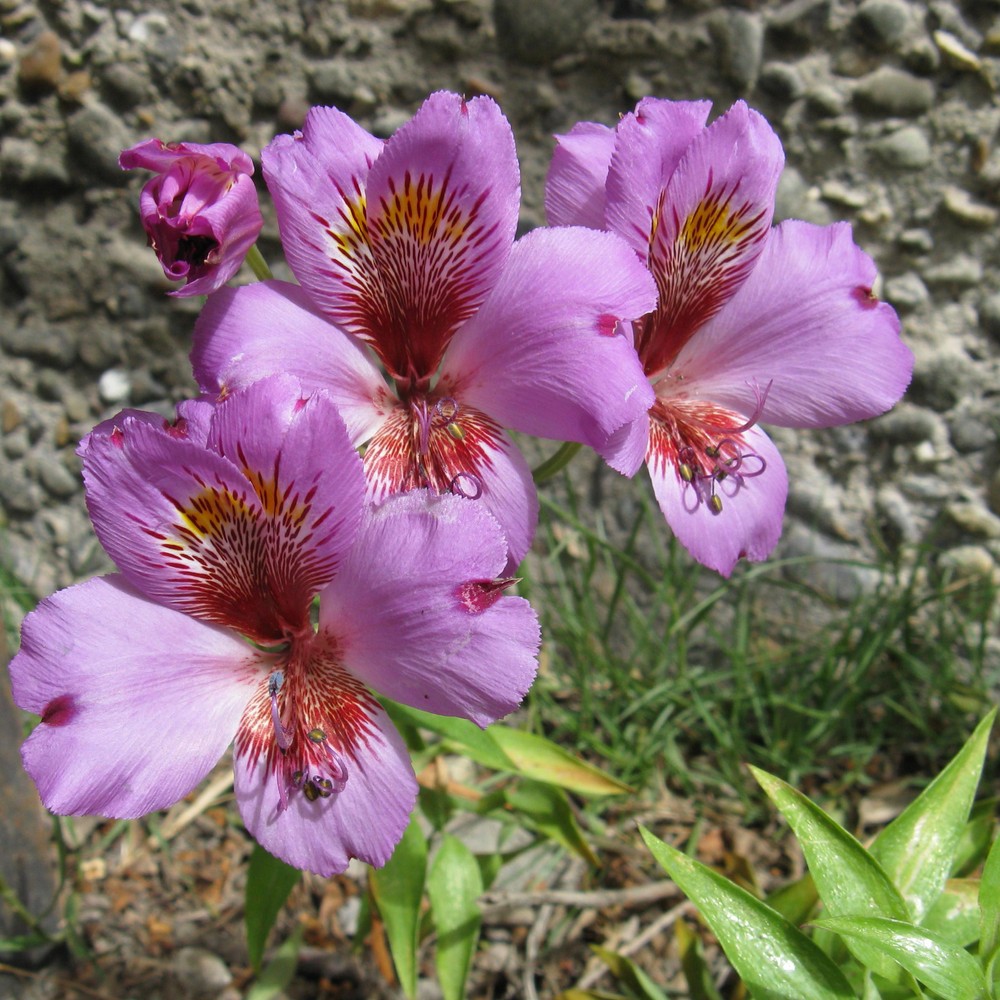Alstroemeria magnifica
(Alstroemeria magnifica)

Description
Alstroemeria magnifica is a phanerogamous, herbaceous, perennial, rhizomatous species belonging tothe Alstroemeriaceae family. It is native to central Chile. It features three subspecies and two varieties, some of which have been treated as different species until recently. The typical subspecies, Alstroemeria magnifica subsp. magnifica, Alstroemeria magnifica subsp. gayana (syn.: A. gayana), Alstroemeria magnifica var. magenta (syn.: A. magenta), Alstroemeria magnifica subsp. maxima (syn.: A. pulchra var. maxima) and Alstroemeria magnifica var. tophoensis. Alstroemeria, commonly called the Peruvian lily or lily of the Incas, is a genus of flowering plants in the family Alstroemeriaceae. They are all native to South America although some have become naturalized in the United States, Mexico, Australia, New Zealand, Madeira and the Canary Islands. Almost all of the species are restricted to one of two distinct centers of diversity, one in central Chile, the other in eastern Brazil. Species of Alstroemeria from Chile are winter-growing plants while those of Brazil are summer growing. All are long-lived perennials except A. graminea, a diminutive annual from the Atacama Desert of Chile. Plants of this genus grow from a cluster of tubers. They send up fertile and sterile stems, the fertile stems of some species reaching 1.5 meters in height. The leaves are alternately arranged and resupinate, twisted on the petioles so that the undersides face up. The leaves are variable in shape and the blades have smooth edges. The flowers are solitary or borne in umbels. The flower has six petals each up to 5 centimeters long. They come in many shades of red, orange, purple, green, and white, flecked and striped and streaked with darker colors. There are six curving stamens. The stigma has three lobes. The fruit is a capsule with three valves. Alstroemeria are classified as an inferior monocot, meaning the petals are located above the ovary and the leaf veins are parallel. Many hybrids and at least 190 cultivars have been developed, featuring many different markings and colors, including white, yellow, orange, apricot, pink, red, purple, and lavender. The most popular and showy hybrids commonly grown today result from crosses between species from Chile (winter-growing) with species from Brazil (summer-growing).
Taxonomic tree:







